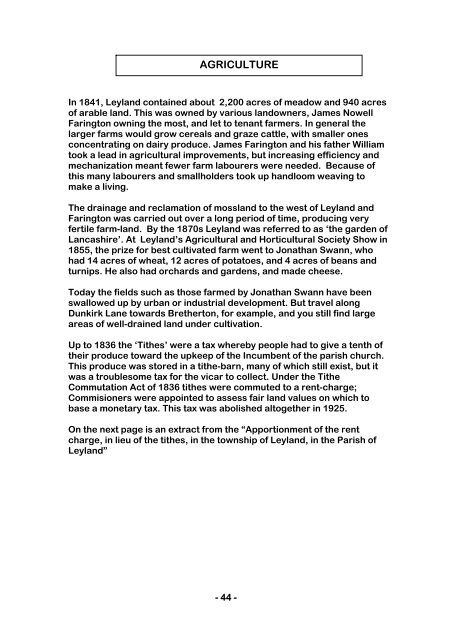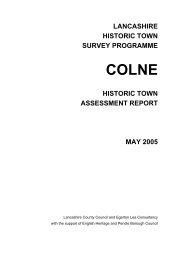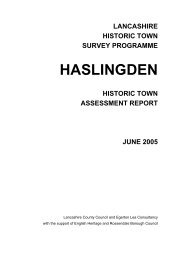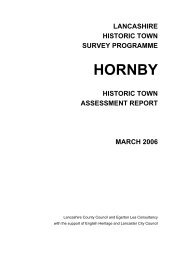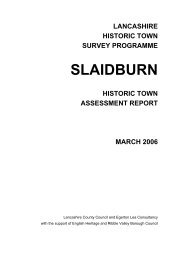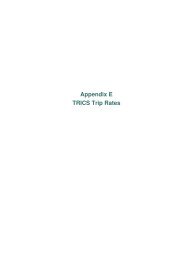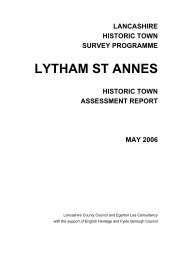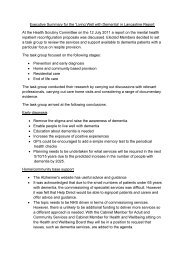LEAH'S LEYLAND - Lancashire County Council
LEAH'S LEYLAND - Lancashire County Council
LEAH'S LEYLAND - Lancashire County Council
You also want an ePaper? Increase the reach of your titles
YUMPU automatically turns print PDFs into web optimized ePapers that Google loves.
AGRICULTURE<br />
In 1841, Leyland contained about 2,200 acres of meadow and 940 acres<br />
of arable land. This was owned by various landowners, James Nowell<br />
Farington owning the most, and let to tenant farmers. In general the<br />
larger farms would grow cereals and graze cattle, with smaller ones<br />
concentrating on dairy produce. James Farington and his father William<br />
took a lead in agricultural improvements, but increasing efficiency and<br />
mechanization meant fewer farm labourers were needed. Because of<br />
this many labourers and smallholders took up handloom weaving to<br />
make a living.<br />
The drainage and reclamation of mossland to the west of Leyland and<br />
Farington was carried out over a long period of time, producing very<br />
fertile farm-land. By the 1870s Leyland was referred to as ‘the garden of<br />
<strong>Lancashire</strong>’. At Leyland’s Agricultural and Horticultural Society Show in<br />
1855, the prize for best cultivated farm went to Jonathan Swann, who<br />
had 14 acres of wheat, 12 acres of potatoes, and 4 acres of beans and<br />
turnips. He also had orchards and gardens, and made cheese.<br />
Today the fields such as those farmed by Jonathan Swann have been<br />
swallowed up by urban or industrial development. But travel along<br />
Dunkirk Lane towards Bretherton, for example, and you still find large<br />
areas of well-drained land under cultivation.<br />
Up to 1836 the ‘Tithes’ were a tax whereby people had to give a tenth of<br />
their produce toward the upkeep of the Incumbent of the parish church.<br />
This produce was stored in a tithe-barn, many of which still exist, but it<br />
was a troublesome tax for the vicar to collect. Under the Tithe<br />
Commutation Act of 1836 tithes were commuted to a rent-charge;<br />
Commisioners were appointed to assess fair land values on which to<br />
base a monetary tax. This tax was abolished altogether in 1925.<br />
On the next page is an extract from the “Apportionment of the rent<br />
charge, in lieu of the tithes, in the township of Leyland, in the Parish of<br />
Leyland”<br />
- 44 -


